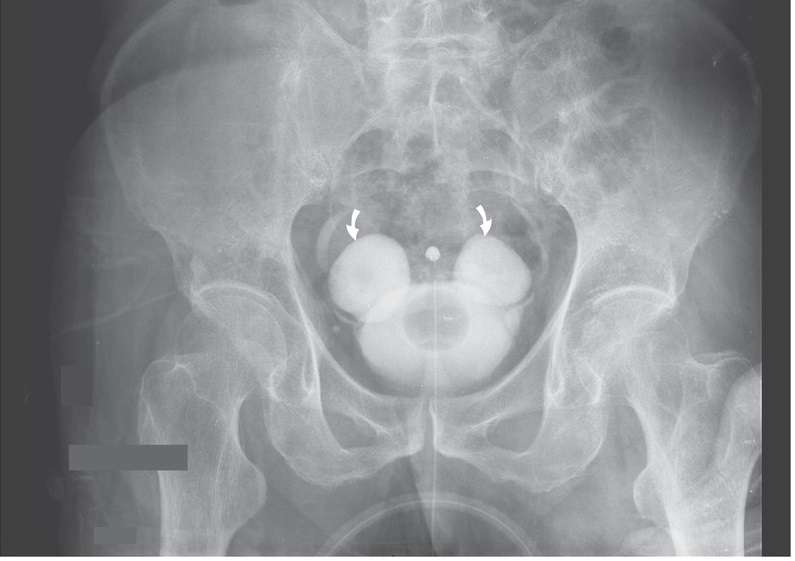This article is an answer to the case – Patient with Intermittent Fevers and History of Recurrent UTI and Neurogenic Bladder
The results of physical and laboratory evaluation were notable for the identification of Pseudomonas aeruginosa in a blood culture and for a urinalysis showing more than 100 white cells per high-power field. He was treated with empirical antibiotics.
Intravenous urography showed no obstructive uropathy, but symmetric diverticula could be seen near both ureteral orifices (arrows).
These lesions, known as Hutch diverticula, are usually congenital rather than occurring as a result of a neurogenic bladder or an infection or obstruction. They represented a new finding in this patient. Hutch diverticula are more commonly seen in men and boys and are usually unilateral and asymptomatic.
After treatment with antibiotics, the patient’s fever and pyuria subsided. He declined any further evaluation or intervention. During the year after diagnosis, two more urinary tract infections developed.

